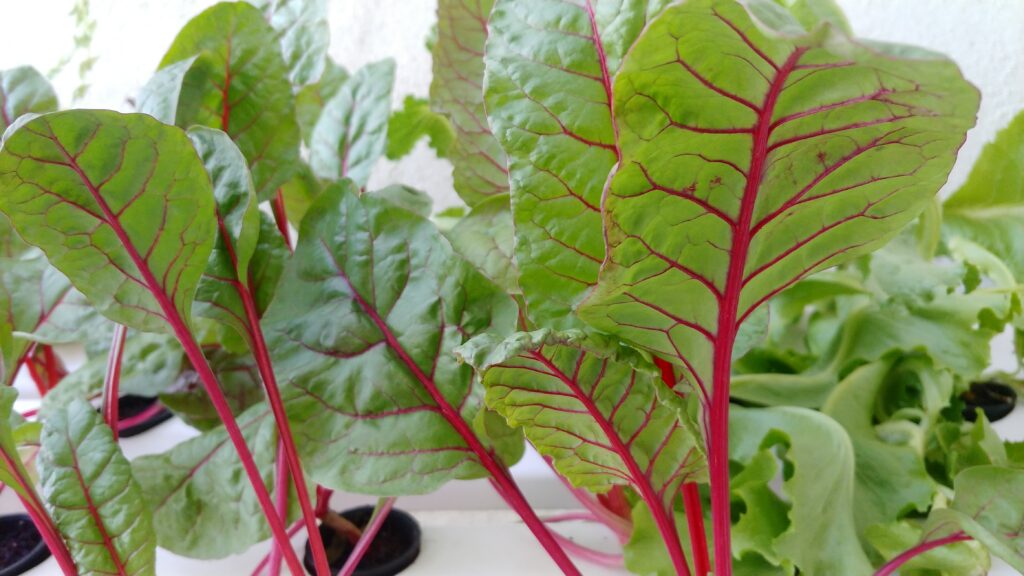If you’re new to aquaponics, you may have wondered about the common pests and diseases that could potentially threaten your system’s health. From pesky insects to plant diseases, it’s important to stay vigilant and be prepared. In this article, we’ll explore some of the common pests and diseases that you should watch out for in your aquaponic system, providing you with valuable insights and tips for maintaining a thriving and disease-free environment. Additionally, we’ll address one of the most commonly asked questions – how much does it actually cost to operate an aquaponics system per month? Join us as we uncover the key factors that contribute to the overall expenses of running an aquaponics system.
Introduction
If you’re considering setting up an aquaponic system, it’s important to be aware of the common pests and diseases that can affect your setup. Just like any other form of agriculture, aquaponics is not immune to the presence of unwanted visitors or the risk of diseases. However, with the right knowledge and preventive measures, you can protect your aquaponic system and ensure the health and productivity of your plants and fish.
Common Pests and Diseases in Aquaponic Systems
Aphids
Aphids are tiny, sap-sucking insects that can wreak havoc on your aquaponic system. They feed on the sap of plants, which can weaken them and cause stunted growth. Identifying aphids is relatively easy – look for small, pear-shaped insects in various colors (such as green, black, or brown) clustered on the leaves, stems, or under the leaves of your plants.
To prevent aphids from infesting your system, it’s crucial to maintain good hygiene. Regularly inspect your plants for any signs of infestation and promptly remove infected leaves or plants. To control aphids, you can spray an insecticidal soap or use natural predators like ladybugs or lacewings, which feed on aphids.
Whiteflies
Whiteflies are another common pest that can trouble aquaponic systems. These tiny, winged insects suck the sap from plants and can cause yellowing, wilting, and leaf drop. Identifying whiteflies is relatively easy – look for small, white-winged insects that fly up when the plant is disturbed.
Preventing whiteflies involves similar measures as those for aphids – maintaining good hygiene, removing infected leaves or plants, and introducing natural predators like ladybugs or parasitic wasps. You can also use yellow sticky traps to catch adult whiteflies.
Spider Mites
Spider mites are tiny, spider-like pests that can cause significant damage to your aquaponic system. They puncture plant cells and suck out the contents, causing leaves to turn yellow, become speckled, or develop a silvery appearance. Identifying spider mites can be challenging because they are extremely small. However, you may notice fine webbing on the underside of leaves, which is their characteristic trait.
To prevent and control spider mites, it’s important to maintain a proper balance of humidity in your system. Spider mites thrive in dry conditions, so regularly misting your plants can discourage infestation. Additionally, introducing predatory insects like ladybugs or using organic insecticidal soaps can help control their population.
Cabbage Worms
Cabbage worms are a common pest in aquaponic systems, especially for leafy greens like lettuce or kale. These green caterpillars chew through the leaves, leaving behind small holes and often causing severe damage. Identifying cabbage worms is relatively easy – look for small green caterpillars on the undersides of leaves.
To prevent cabbage worms, it’s important to practice good crop rotation and remove any caterpillars you spot on your plants. You can also use row covers to physically protect your plants, preventing adult butterflies from laying eggs. Natural deterrents like neem oil or Bt (Bacillus thuringiensis) can also be effective in controlling cabbage worms.
Slugs and Snails
Slugs and snails can be a nuisance in aquaponic systems, particularly in wet or humid conditions. These slimy creatures feed on the leaves and stems of plants, leaving large irregular holes and damaging entire crops. Identifying slugs and snails is relatively easy – look for slimy trails, especially during damp weather or at night.
To prevent slugs and snails from damaging your plants, you can introduce natural predators like ducks or use physical barriers such as copper tape or diatomaceous earth. Removing any hiding places, like plant debris or boards, can also discourage their presence in your system.
Fungal Diseases
Fungal diseases can easily affect aquaponic systems, especially in humid environments or when plants are crowded. Common fungal diseases include powdery mildew, downy mildew, and root rot. Identifying fungal diseases may require close inspection of your plants – look for powdery patches, discolored or rotting roots, or wilting leaves.
Prevention is the key to avoiding fungal diseases in your aquaponic system. Ensure good air circulation around your plants, avoid overcrowding, and maintain proper drainage to prevent waterlogged conditions. Regularly inspect your plants and remove any infected ones promptly. If necessary, you can use organic fungicides or natural remedies like garlic or baking soda sprays.
Bacterial Infections
Bacterial infections can pose a threat to the health of your plants and fish in an aquaponic system. They can manifest as leaf spots, wilting, rotting stems, or discolored roots. Identifying bacterial infections can be challenging since symptoms can vary. However, noticing a foul odor, slimy or sticky residue, or unusual plant growth can indicate infection.
To prevent bacterial infections, it’s important to maintain good hygiene in your system. Avoid overhead watering, as it can create a moist environment ideal for bacterial growth. Provide adequate spacing between plants to improve air circulation. Removing any infected plants promptly and maintaining proper nutrient balance can also help prevent bacterial infections.
Viral Infections
Viral infections can be devastating in aquaponic systems, as there are limited treatment options once plants are infected. Viruses can cause stunted growth, mottled or distorted leaves, and general decline in plant health. Identifying viral infections may require laboratory testing, but signs like leaf discoloration, mosaic patterns, or ring spots can point to viral presence.
Preventing viral infections in your aquaponic system is mainly about maintaining good hygiene and preventing the introduction of infected plants. Quarantine new plants for a period before introducing them into your system to ensure they are disease-free. Proper sanitation practices, such as disinfecting tools and equipment, can also help prevent the spread of viruses.
Nutrient Deficiencies
Nutrient deficiencies can occur in aquaponic systems, affecting the health and productivity of plants. Common nutrient deficiencies include deficiencies in nitrogen, phosphorus, potassium, iron, or magnesium. Identifying nutrient deficiencies can be done through visual inspection of your plants – look for yellowing leaves, stunted growth, or specific leaf discoloration patterns.
Preventing nutrient deficiencies requires maintaining a well-balanced aquaponic system. Regularly test the water quality to ensure proper nutrient levels and adjust the fish feed or additional nutrients accordingly. Providing a diverse range of fish feed and monitoring pH levels can also help prevent nutrient deficiencies.
pH Imbalances
Maintaining the proper pH balance in your aquaponic system is crucial for the overall health and productivity of your plants and fish. pH imbalances can lead to several issues, including nutrient availability problems, stunted growth, and increased susceptibility to diseases. Testing the pH of your system regularly is essential to identify any imbalances.
To prevent pH imbalances, it’s important to monitor and adjust the pH regularly. Different plants have specific pH preferences, so ensure the pH levels are suitable for the crops you’re growing. Using pH buffering agents or adjusting the feed for your fish can help maintain a stable pH in your aquaponic system.
Conclusion
Knowing the common pests and diseases that can affect aquaponic systems empowers you to take proactive measures to prevent, detect, and control them. By maintaining good system hygiene, practicing preventive measures, and using natural remedies when necessary, you can protect your aquaponic system and enjoy the benefits of healthy and productive plants and fish.

